Urbino, nestled in the Marche region of Italy, is a city that attracts the visitors by its deep historical roots, remarkable architecture, and cultural legacy. This unique destination combines art, history, and the splendor of nature.
The historical center of Urbino, surrounded by the medieval walls and bastions, is pretty small, but lovely and cozy. The whole town can be covered in a day.
Along with Florence, Urbino is considered to be the cradle of the Italian Renaissance. During the Renaissance era, Urbino stood as a pivotal hub of intellect and culture within Italy. Under the patronage of the Montefeltro family, renowned for their support of arts and literature, the city attracted a number of scholars and artists, leaving the town with priceless heritage.
Urbino is surrounded by picturesque hills and landscapes, making it a great destination for nature lovers. The rolling hills of the Marche region offer beautiful views and are perfect for hiking and exploring.
Quick Facts
- Urbino’s historic center was designated a UNESCO World Heritage Site in 1998. The city is recognized for its well-preserved Renaissance architecture, including the famous Palazzo Ducale (Ducal Palace).
- Urbino is the birthplace of the renowned Renaissance artist Raphael (Raffaello Sanzio da Urbino), who is considered one of the greatest artists in history. Raphael’s house in Urbino is now a museum dedicated to his life and work.
- The Palazzo Ducale is a masterpiece of Renaissance architecture and a symbol of Urbino. It was built in the 15th century and houses the National Gallery of the Marche, which features an impressive collection of Renaissance art.
- Urbino is home to the University of Urbino “Carlo Bo,” one of the oldest universities in Italy. Established in 1506, the university has a rich academic tradition and is renowned for its humanities and arts programs.
Itinerary
There is no railway station in Urbino, therefore the most efficient way to reach this Marche town is by car. However if you feel adventurous, you can get here from Pesaro Stazione by bus within an hour.
You can leave your car at the large Mercatale car park and explore the town on foot. Mercatale parking is paid: 1.50 € / Hour
1. Breakfast at Bar Pasticceria Ducale Urbino
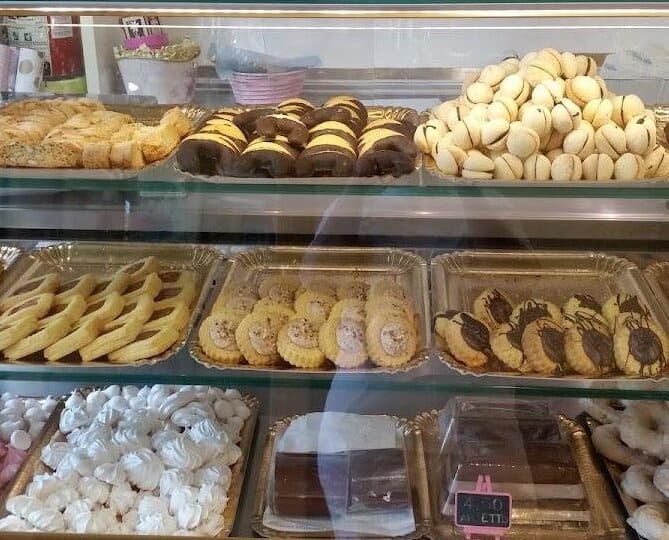
I always start exploring a new Italian town at a local pastry shop (Italian: pasticceria). We found this little place with freshly baked pastry just a short stroll from the parking lot. Grab a coffee and a croissant (Italian: cornetto) here to energize yourself for the upcoming hours. Trust me, you’ll need it as we head to our first and most important stop: Palazzo Ducale.
2. Ducal Palace and National Gallery of the Marche
Italian: Palazzo Ducale, La Galleria Nazionale Delle Marche
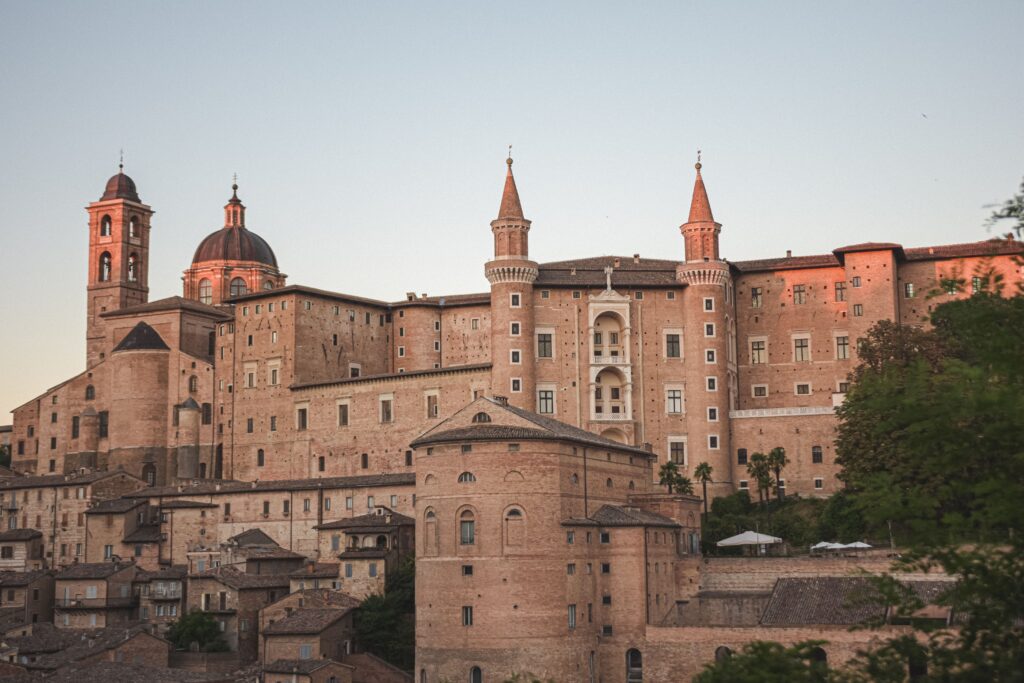
The Ducal Palace is impossible to overlook in Urbino. It stands as the town’s central masterpiece. It is visible from nearly every corner of Urbino.
This Renaissance marvel, officially known as Palazzo Ducale in Italian, houses the National Gallery of the Marche. Inside, you’ll find the treasures of Renaissance art, featuring masterpieces by renowned artists like Raphael, Piero della Francesca, and Titian.
The Palace’s construction began in the mid-15th century under Duke Federico III da Montefeltro, overseen by the Florentine architect Maso di Bartolomeo. This palace is a UNESCO World Heritage Site, a testament to its historical importance
Besides the impressive art collections, visitors can explore the chapel, cellar, stables, and various rooms, including the “Studiolo,” showcasing Duke Federico’s passion for classical and humanistic studies.
Don’t miss the chance to ascend one of the palace’s turrets for a panoramic view that captures Urbino’s beauty from above.
Opening Hours: Tuesday-Sunday: from 8:30 AM to 7:15 PM (ticket office closes at 6:15 PM). Monday: CLOSED
Ticket Price: 10€
You can purchase your ticket here in advance.
Just in front of the entrance of the National Gallery you’ll see the neoclassical facade of the cathedral of Santa Maria Assunta. And this is our next stop.
However I suggest making a few passes back to the Piazza Rinascimento where you can find an obelisk in front of the San Domenico church. This is one of the 15 original Egyptian obelisks which you can find till date in Italy. In Egypt there are only 7 of them left.
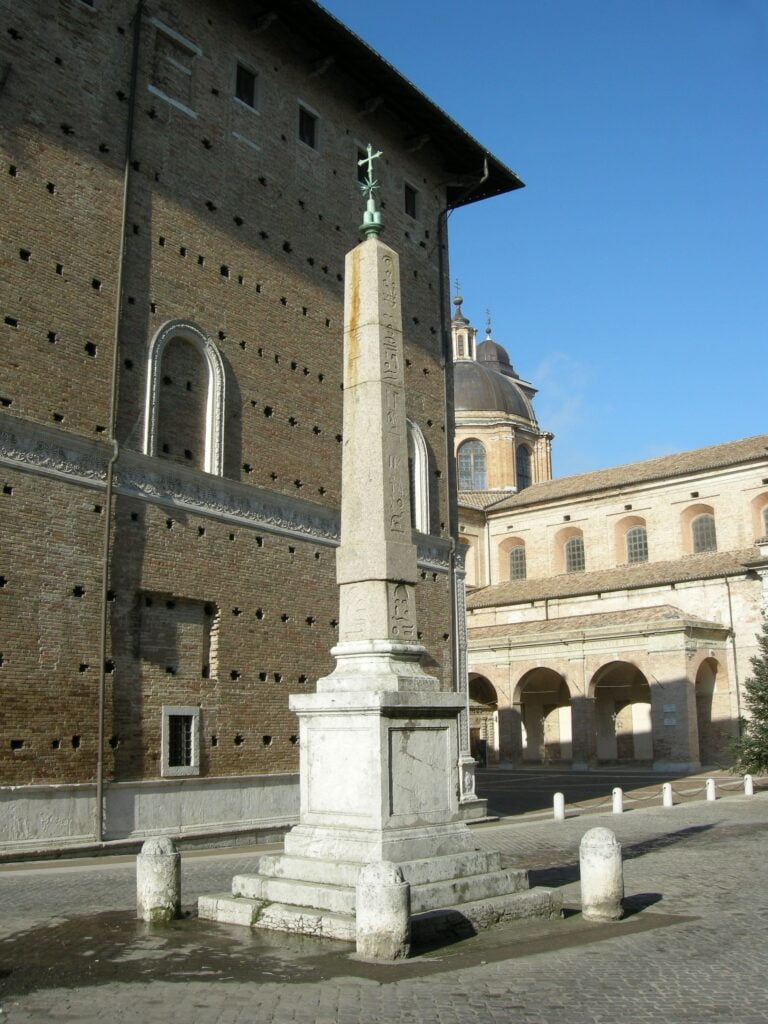
3. Urbino's Cathedral
Italian: Duomo di Urbino, Cattedrale Metropolitana di Santa Maria Assunta
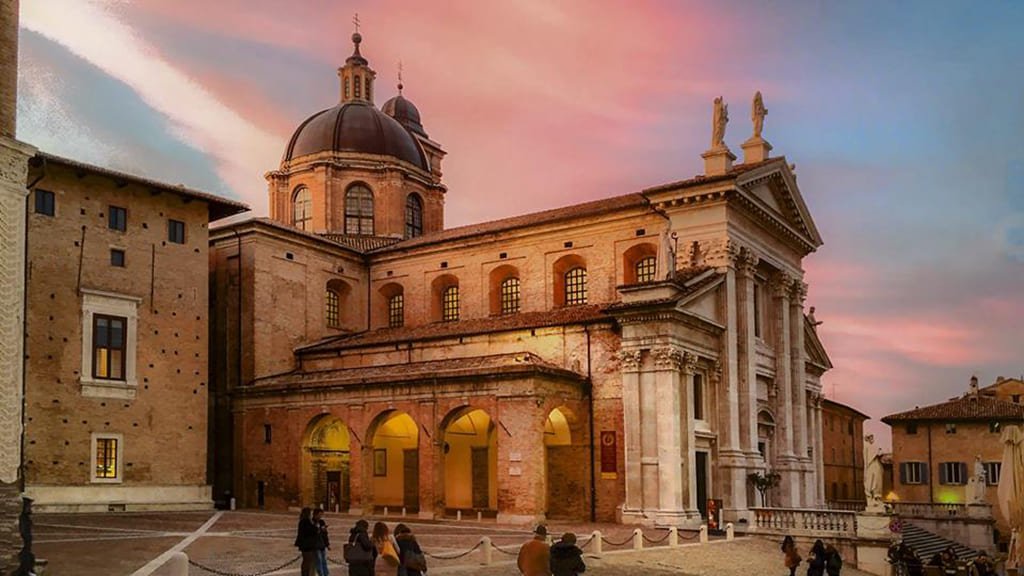
The Cathedral of Urbino, known in Italian as Cattedrale di Santa Maria Assunta, was originally built in 1021. It underwent multiple reconstructions and redesigns over the years. In 1789, an earthquake severely damaged the cathedral, leading to its reconstruction in the current neoclassical style.
Inside, the cathedral features a predominantly white interior with very few frescoes. However, visitors can still appreciate various artworks dating back to the 18th century.
Opening Hours: 7:30 AM – 8 PM
Ticket Price: free
4. Lunch in the historical center
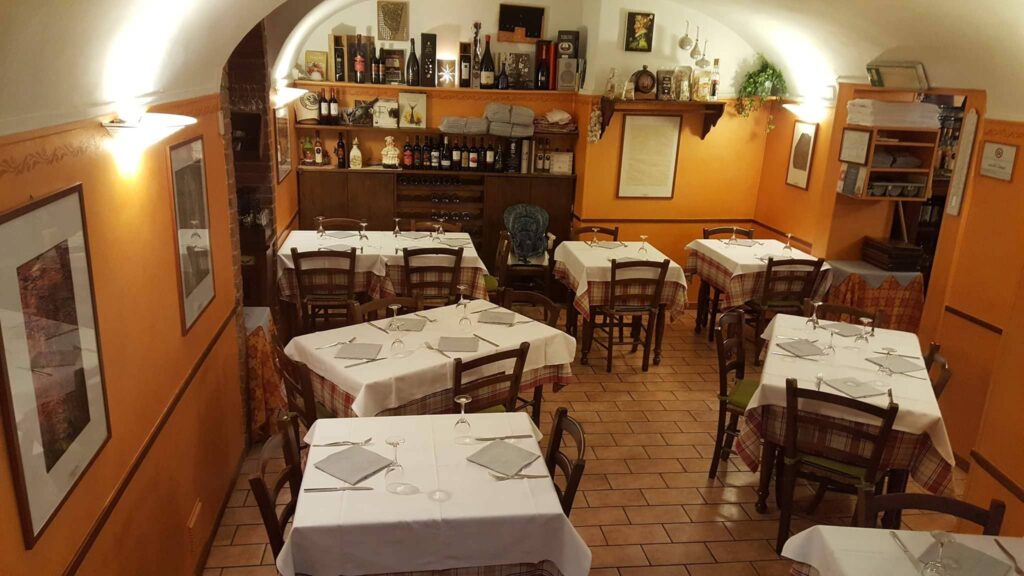

It’s time to refuel, so let’s head to the heart of the town, Piazza della Repubblica, for lunch. If you’re in the mood for a quick snack, I recommend trying the Crescia Sfogliata at Piadineria L’Aquilone, just a short walk from the Piazza. La Crescia is a delicious local flatbread with various fillings.
But take your time, there is no rush. Our next stop is near the historical center at the chapels of San Giuseppe and San Giovanni Battista, which are closed from 1 to 3 PM.
So if you fancy a substantial meal, go to La Trattoria del Leone di Lucarini Mauro, located right in front of the central square. This family-owned restaurant offers traditional local cuisine. If you are a meat lover, try wild boar stew and salad (Italian: cinghiale stufato e insalata). This dish represents well the culinary traditions of the Marche.
Just don’t forget to book a table in advance. It usually gets busy.
Just a few steps from the central square, there’s a 16th-century chapel called Oratorio di San Giuseppe. Built between 1503 and 1515 for a confraternity established in 1500 by the Franciscan friar Gerolamo Recalchi of Verona, this chapel is richly decorated with frescoes. It’s a rectangular-shaped, single-room chapel.
On its side walls, there are four large canvases painted by Urbino artist Carlo Roncalli. These paintings depict key events from the life of Saint Joseph, including his marriage to the Virgin Mary, the birth of Jesus Christ, the flight into Egypt, and the death of Saint Joseph.
Above the entrance, there’s a choir featuring a valuable organ crafted by Sebastiano Vici in 1782. Additionally, a splendid Murano glass chandelier hangs from the ceiling, adding to the chapel’s grandeur.
Opening Hours: Monday to Saturday: from 10 AM to 1 PM and from 3 PM to 6 PM. On Sundays: from 10 AM to 1 PM.
Ticket Price: 2.50€. It is possible to acquire one ticket to both Oratorio di San Giuseppe and Oratorio di San Giovanni Battista for 4€.
6. Oratory of St John the Baptist
Italian: Oratorio di San Giovanni Battista

The Oratorio di San Giovanni Battista is a 14th-century small chapel located not far from the Oratorio di San Giuseppe.
The Oratory is best known for its late Gothic style frescoes by the brothers Lorenzo and Jacopo Salimbeni.
It is very different from the Oratory of San Giuseppe. The interior is a large room without furnishings, adorned with a pictorial cycle in bright colors. It bears a striking resemblance to the Scrovegni Chapel in Padua.
Opening Hours: Monday to Saturday: from 10 AM to 1 PM and from 3 PM to 6 PM. On Sundays: from 10 AM to 1 PM. On the first Sundays of the month it is also open from 3 PM to 6 PM.
Ticket Price: 3€. It is possible to acquire one ticket to both Oratorio di San Giuseppe and Oratorio di San Giovanni Battista for 4€.
7. Raphael's House
Italian: Casa Natale di Raffaello
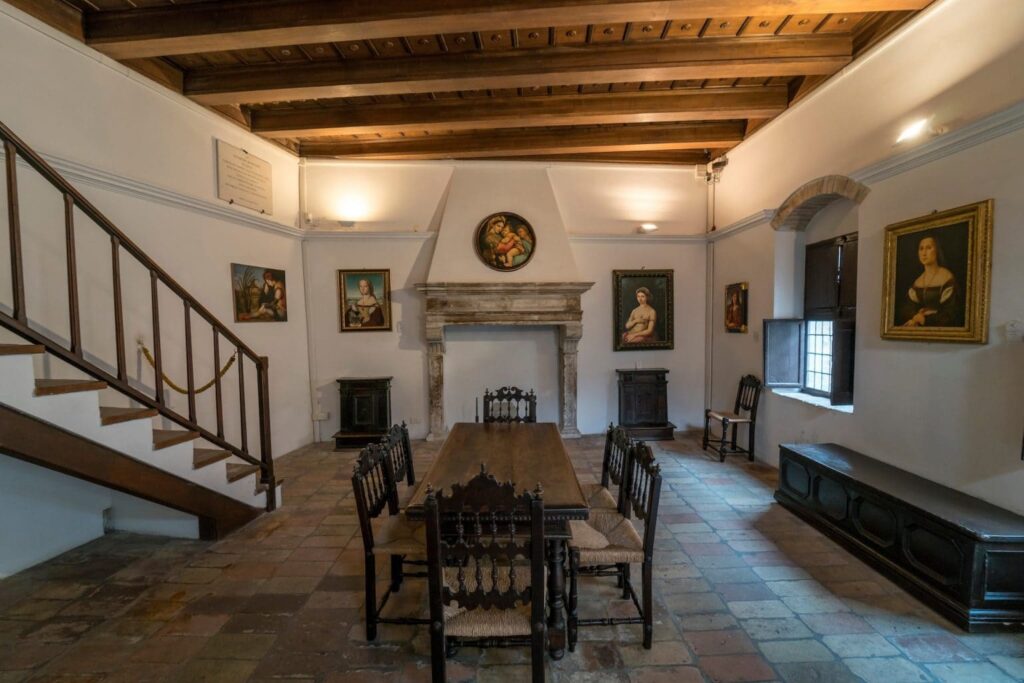
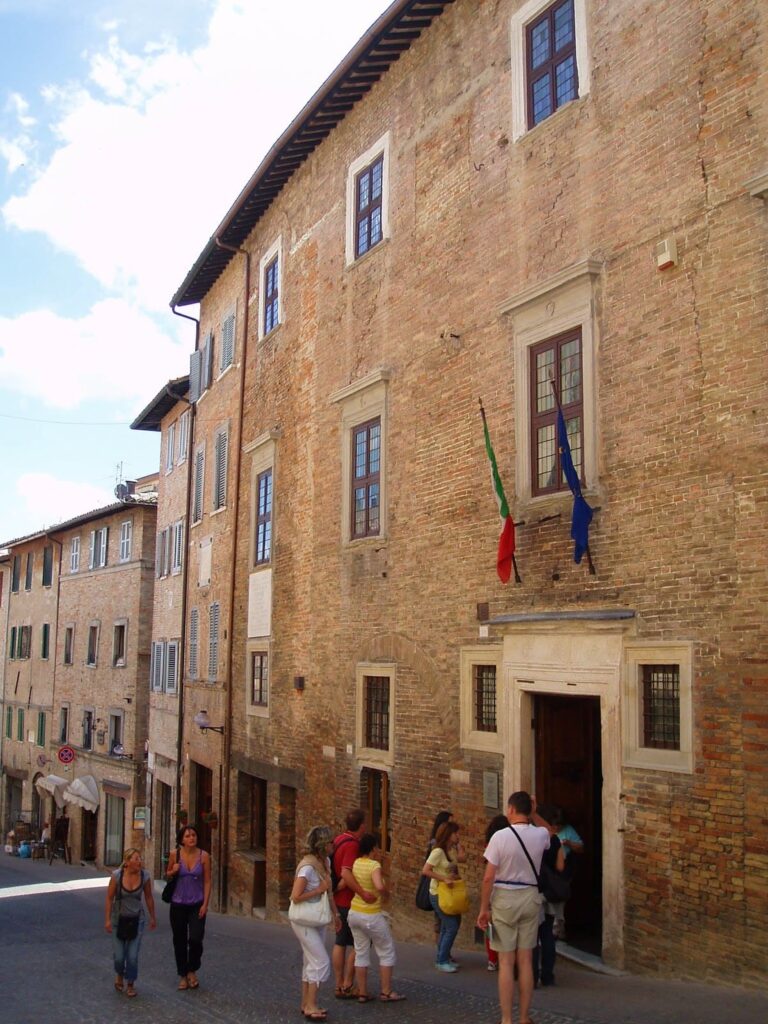
Next, we’re heading to Raphael’s House, the birthplace of the famous Renaissance artist. It’s just a 10-minute walk from the Chapels.
Casa di Raffaello is where he was born on March 28, 1483, and where he spent his early years learning art under the guidance of his father, Giovanni Santi, who was also a renowned painter.
In 1635, the house was acquired by Muzio Oddi, an architect from Urbino. Later, in 1873, it became the property of the Accademia Raffaello, established in 1869 by Pompeo Gherardi. Since then, the academy has been actively promoting various studies and initiatives dedicated to the painter.
Thanks to the academy’s efforts, the house has been adorned with numerous works of art over the years. These pieces, contributed by private citizens and public institutions, include paintings, sculptures, ceramics, wooden furnishings, and more, all of which are now displayed inside the house.
Opening Hours: From March: Monday to Saturday: 9 AM – 1 PM* / 3 PM – 7 PM*
Sunday and Holidays: 10 AM – 1 PM* / 3 PM – 6 PM*
From November: Monday to Saturday: 9 AM – 2 PM*
Sunday and Holidays: 10 AM – 1 PM* / 3 PM – 6 PM*
*Entry is not permitted 30 minutes before closure
Ticket Price: 4€
8. Albornoz Fortress
Italian: Fortezza Albornoz
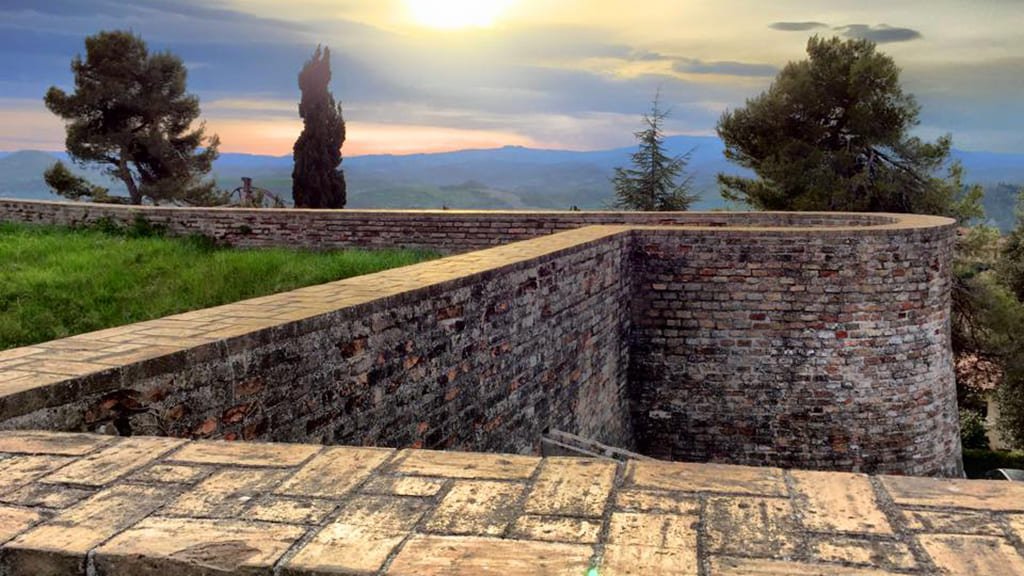
To conclude our Urbino tour, we head to the town’s highest point: the Albornoz Fortress. This fortified structure stands on the top of Monte di S. Sergio mountain just 6 minutes walk from the Raphael’s House.
It is traditionally credited to Cardinal Albornoz, though some studies suggest his successor, the Spanish Cardinal Grimoard, might have overseen its construction.
Built in the latter half of the 14th century, the fortress served a defensive role, replacing an older fortification deemed unsuitable for Urbino. Since 1975, the spacious area in front has been transformed into a public park dedicated to the Resistance movement.
From the fortress, we’re treated to a splendid panoramic view of Urbino and the picturesque Marche landscape.
Opening hours: 10 AM to 1 PM, 2 PM to 6 PM
Ticket Price: 1.50€
9. Aperitif at La Fortezza Bar
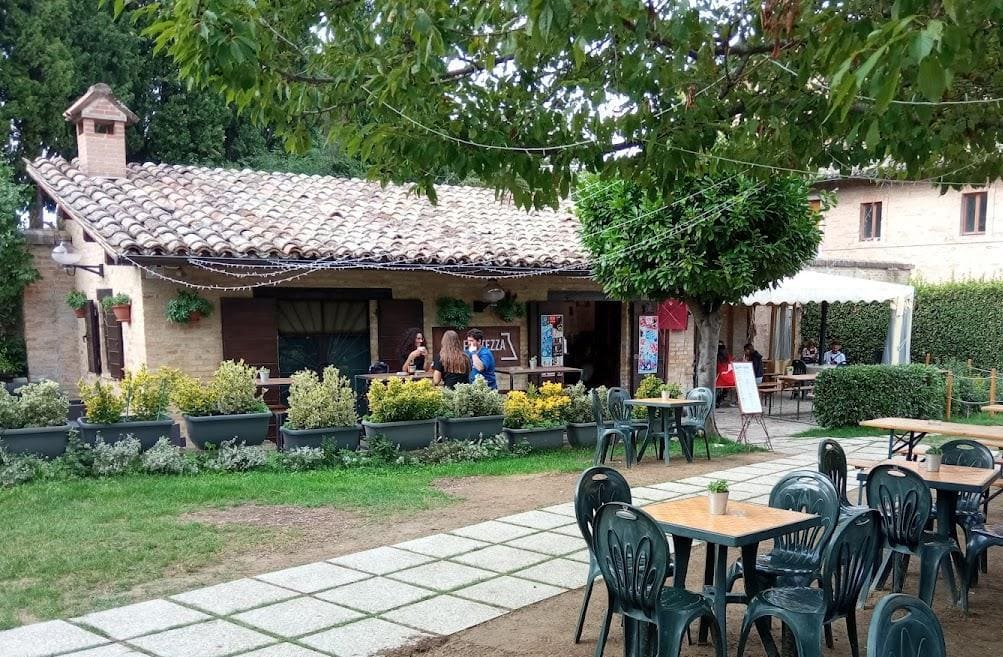
10. Dinner: La Balestra Antica Hostaria
We chose a medieval vibe restaurant for dinner. Besides wood-fired pizza you could find delicious traditional pasta and meat dishes on the menu. If you want to go local, try traditional Marche-style strozzapreti pasta (Italian: strozzapreti alla marchigiana). There is an additional bonus here for you. A 300-year old plane tree stands just in front of the restaurant. It is considered one of the oldest plane trees in Europe. Buon appetito!
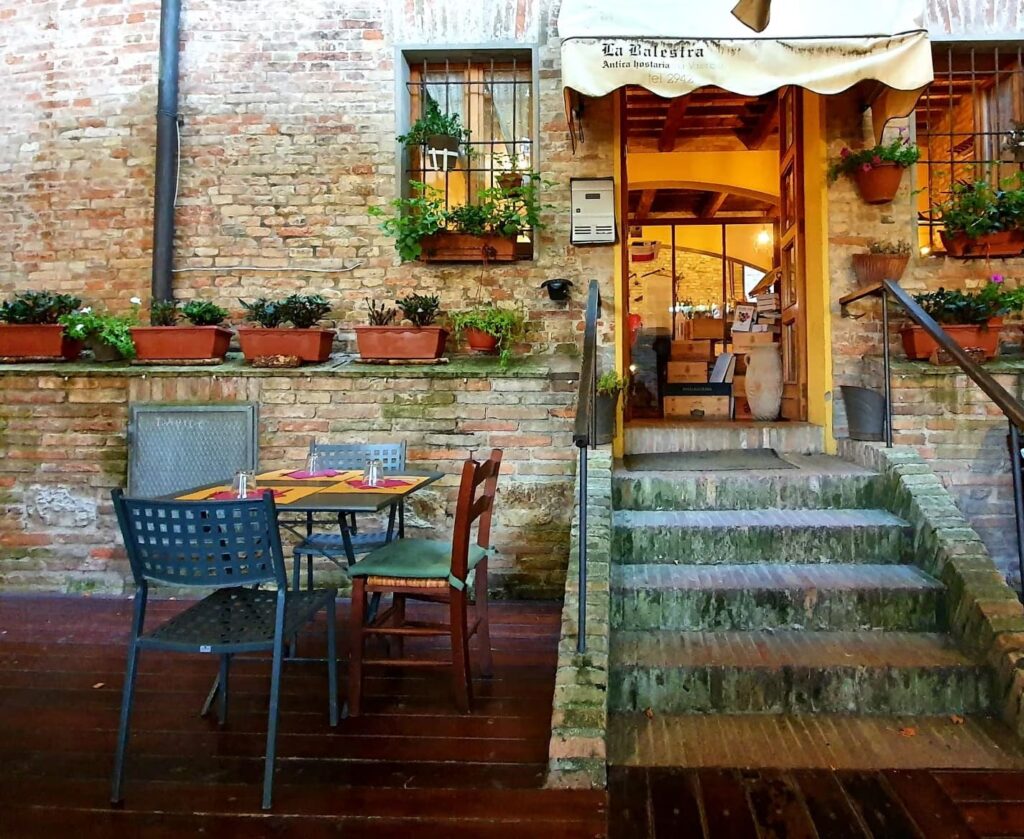
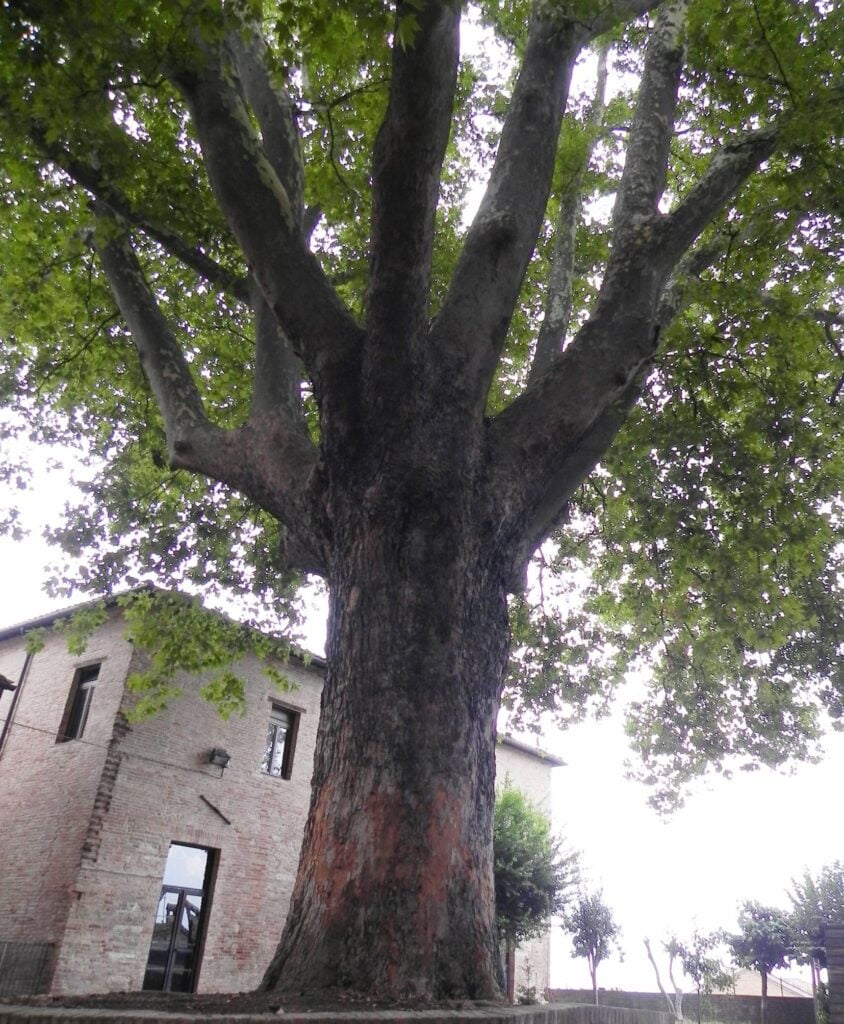
Transport and Moving Around
As there’s no train station in Urbino, the easiest way to reach Urbino is by car.
- From Bologna – 2 hours
- From Florence – 3 hours
- From Rome – 3 hours 40 minutes
- From Ancona – 1 hour 20 minutes
The closest major train station is Pesaro. From Pesaro, you can take a 1-hour bus to Urbino. Trains from cities like Bologna, Rome, and Florence connect to Pesaro.
Tips
If you decide to stay overnight in Urbino, a mere 20-minute drive near the Calmazzo village will lead you to a natural wonder called Marmitte dei Giganti, also known as “Giants’ Pots.” These extraordinary geological formations are large potholes or basins carved into rocks due to the erosive power of water over centuries.
Upon arriving, you’ll find a parking spot on the left just after crossing the bridge. Follow a small descending path in the midst of nature, clearly marked with red and white signs. In just a few minutes, you’ll reach the canyon. Stand on the boulders, which rise more than 30 meters high, and relish the captivating view. It’s an ideal spot for a picnic, allowing you to enjoy the natural beauty of this unique site.
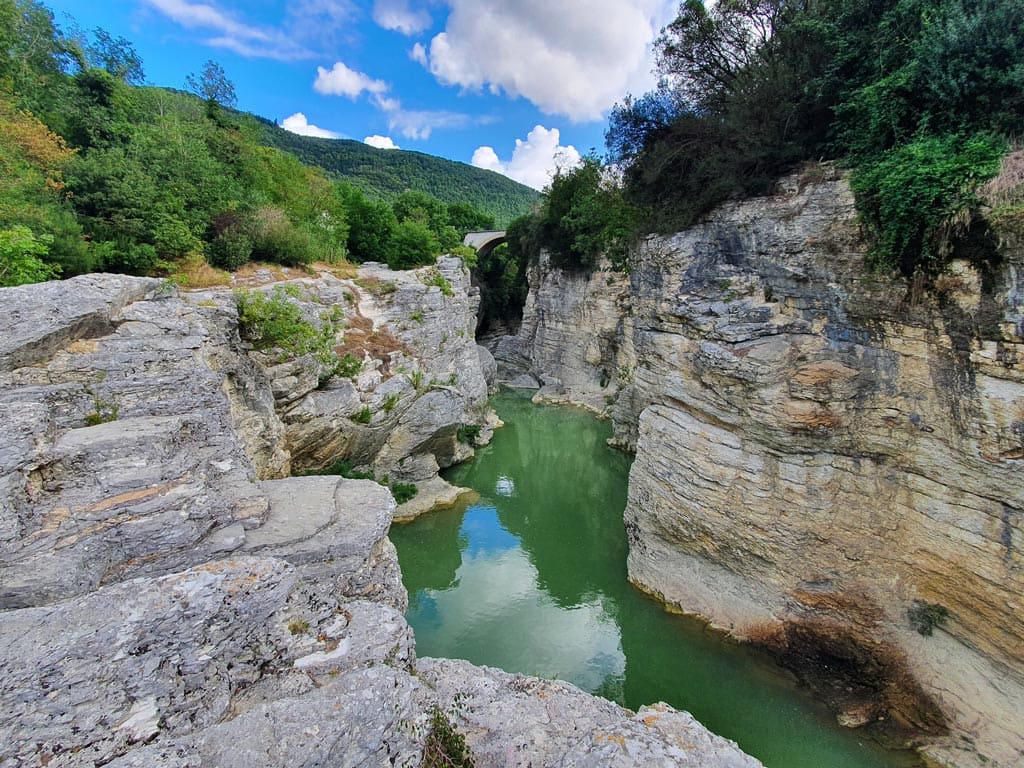
Summary
Urbino is a great example of hidden treasures that await beyond the beaten path. Just get off the well-trodden tourist routes and discover the true Italy with us.
Who would have imagined that one of the most significant Renaissance sites in Europe lies tucked away in the heart of the Marche region, far from the bustling tourist hubs?
We invite you to revel in the beauty of this unique place. We hope that our guide on what to do in Urbino within a day will be helpful to you. Enjoy your journey as you explore the unexpected allure of Urbino.
Seeking a day trip from Urbino?
Within a couple of hours of driving, you can discover a wonderful Tuscan town.
Check our travel guide to Siena!
Hey, guys, today we are going to talk about a wonderful city in Tuscany. I am going to walk you through the top places of Siena. We are offering a guide, which covers the major attractions of the city.


